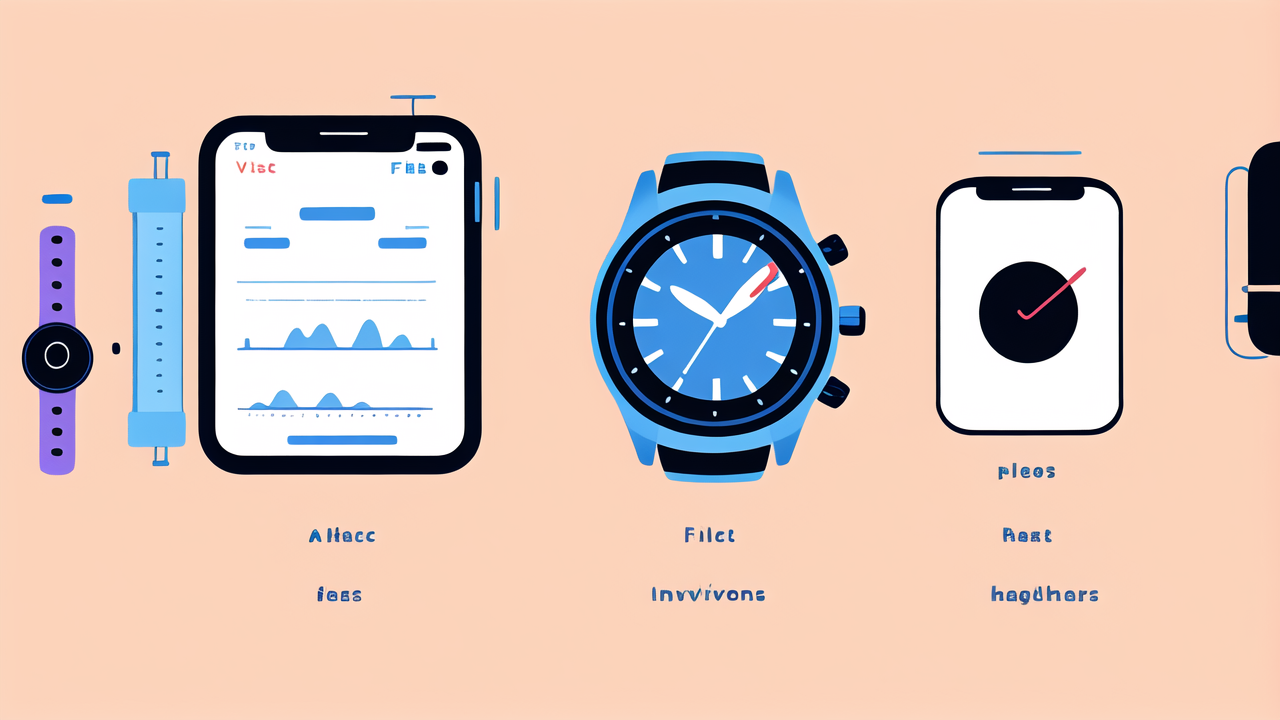The Evolution of Activity Tracking Technology in Wearables
The Advent of Smartwatches and Fila's Entry into the Market
Activity tracking has come a long way in recent years. Smartwatches burst onto the scene, offering a range of features. They quickly became popular for their versatility and style. Fila, known for sportswear, saw an opportunity in this growing market. They entered with their own line of activity trackers. Fila's approach was simpler, focusing on core fitness tracking features. Their watches aimed to be more affordable and user-friendly. This move broadened the market, giving consumers more choices. It also sparked competition, driving innovation in the wearable tech industry.

Technological Innovations in Fila Watches vs Smartwatches
Fila watches and smartwatches have taken different paths in innovation. Fila focuses on improving basic tracking features. They've refined step counting accuracy and calorie burn estimates. Their watches now offer better water resistance and longer battery life. Smartwatches, on the other hand, have expanded their capabilities. They now include GPS tracking, heart rate monitoring, and sleep analysis. Many can even make calls and run apps. The tech in smartwatches is more advanced, but also more complex. Fila's simpler approach means easier use and lower costs. Both types continue to evolve, catering to different user needs and preferences.
The Role of Wearable Technology in Health and Wellness
Wearable tech has become a key player in personal health management. Both Fila watches and smartwatches contribute to this trend. They encourage users to be more active and aware of their health. Fila watches focus on daily step counts and calorie burn. This simple data can motivate users to move more. Smartwatches offer more detailed health insights. They can track heart rate, stress levels, and sleep patterns. Some even alert users to potential health issues. Both types of watches help users set and achieve fitness goals. They've made health tracking more accessible and engaging for many people. As a result, wearables are now an important tool in preventive healthcare.
Key Features of Top Fila Watches and Smart Smartwatches
Analyzing Fila Watches' Step Counter and Calorie Tracking Capabilities
Fila watches excel in their core functions of step counting and calorie tracking. Their step counters are known for accuracy and reliability. They use advanced algorithms to distinguish between walking and other movements. This reduces false step counts. Fila's calorie tracking is based on steps taken and user data like age and weight. While not as precise as some smartwatches, it gives a good estimate for most users. Many Fila models also include distance tracking. This feature uses step count to estimate how far you've walked or run. Some higher-end Fila watches now offer basic sleep tracking too. Overall, Fila focuses on these essential features, making them easy to use and understand.

Comparing Smart Watches' Advanced Metrics and User-Friendly Interfaces
Smartwatches offer a wider range of advanced health metrics. They typically include:
- Heart rate monitoring
- GPS tracking
- Sleep analysis
- Stress level measurement
- Blood oxygen level sensing
These features provide a more comprehensive view of health. Smartwatches often have color touchscreens for easy navigation. They display data in graphs and charts for better understanding. Many allow customization of watch faces and data displays. Some can even suggest workouts or breathing exercises based on your data. The interfaces are designed to be intuitive, even with the complex features. However, the learning curve can be steeper than with simpler Fila watches.
Evaluating the Durability and Battery Life of Fila Watches vs Smartwatches
Durability and battery life are crucial for activity trackers. Fila watches generally score high in these areas. They're built to withstand the rigors of daily wear and exercise. Many are water-resistant, suitable for swimming and showering. Fila watches often have battery lives of several months to a year. This is because they have simpler displays and fewer power-hungry features. Smartwatches, while more feature-rich, tend to have shorter battery lives. Most need charging every 1-3 days, depending on usage. However, they're also built to be durable, with many offering water resistance. The trade-off is clear: Fila watches offer longevity, while smartwatches provide more features at the cost of battery life.
User Adoption and Market Trends in the United States
The Demand for Activity Trackers: Analyzing the Market Growth
The U.S. market for activity trackers has seen significant growth in recent years. This trend is driven by increasing health awareness and technological advancements. Both Fila watches and smartwatches have benefited from this growth. The market has expanded to include various age groups and fitness levels. Younger users often prefer feature-rich smartwatches. Older adults and fitness beginners may opt for simpler Fila watches. The COVID-19 pandemic further boosted demand for home fitness solutions. This led to more people investing in wearable fitness tech. Market analysts predict continued growth in this sector. The focus is shifting towards more personalized health tracking and data analysis.

Consumer Preferences: Fila Watches vs Smartwatches
Consumer preferences in the U.S. vary widely between Fila watches and smartwatches. Fila watches appeal to those who want:
- Simple, easy-to-use devices
- Long battery life
- Affordable options
- Basic fitness tracking
Smartwatches attract users looking for:
- Advanced health metrics
- Integration with smartphones
- Customizable features
- Stylish designs
Price is often a deciding factor. Fila watches are generally more budget-friendly. Smartwatches can be a significant investment. Brand loyalty also plays a role. Some consumers prefer established tech brands for smartwatches. Others trust Fila's reputation in sports apparel. The choice often depends on individual needs and tech comfort levels.
The Future of Wearable Technology in the United States Market
The future of wearable tech in the U.S. looks promising for both Fila watches and smartwatches. We can expect to see:
- More advanced health monitoring features
- Improved battery life, especially in smartwatches
- Greater integration with healthcare systems
- Enhanced data privacy and security measures
- More affordable options across both categories
Fila may introduce more advanced features while maintaining simplicity. Smartwatches will likely become more health-focused. The line between the two may blur as technology advances. We might see hybrid devices that combine the best of both worlds. The market is also likely to segment further. This could lead to more specialized devices for specific health concerns or activities. As wearables become more common, their role in preventive healthcare will grow. This could lead to partnerships with insurance companies and healthcare providers. The future of wearable tech is not just about fitness, but overall health management.




Leave a comment
This site is protected by hCaptcha and the hCaptcha Privacy Policy and Terms of Service apply.